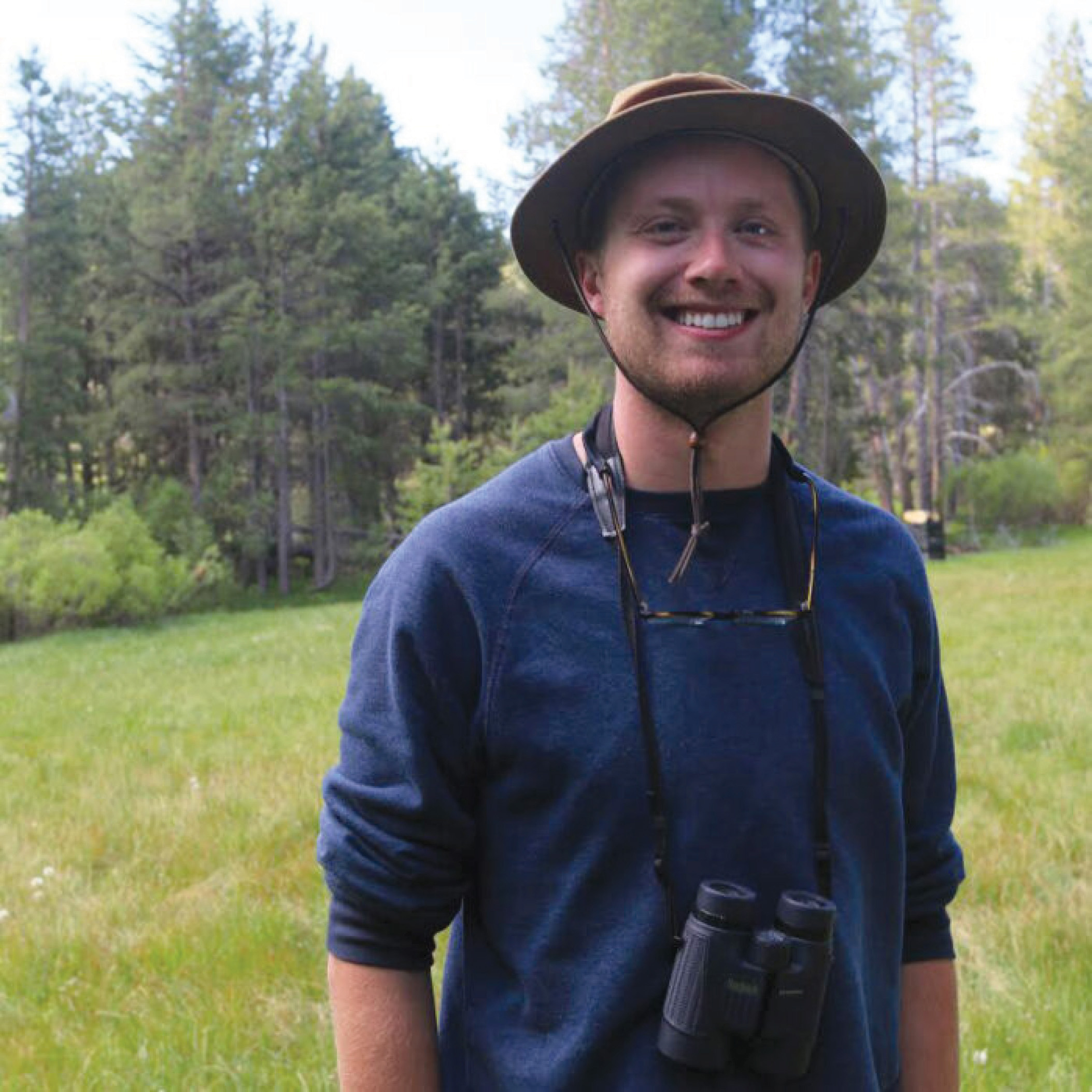A Little Goes a Long Way - Discovery Summer 2022 - Science
With technology affecting almost every aspect of today’s fast-paced world, computer science graduates have a variety of industry options as demand for their knowledge grows.
By Kathryn Knight, PhD, Journal of Experimental Biology
Any animal ascending a mountain experiences a double whammy of impediments: the air gets thinner as it also becomes colder, which is particularly problematic for creatures struggling to keep warm when less oxygen is available.
For tiny animals with the highest-octane lifestyles, such as hovering hummingbirds, the challenges of relocating to higher levels to evade climate change may be too much, but no one knew whether these extraordinary aviators may have more gas in the tank to keep them aloft at higher altitudes. As Anna’s hummingbirds (Calypte anna) are comfortable up to elevations of about 2800 meters, Austin Spence from the University of Connecticut, USA, and Morgan Tingley from the University of California, Los Angeles, USA, were curious to find out how hummingbirds that originated from close to sea level and those that live at the loftier end of the range would cope when transported well above their natural habitat to an altitude of 3800 meters.
Spence lured the agile aeronauts into net traps, from sites 10 meters above sea level (Sacramento, CA) up to 2400 meters (Mammoth Lakes, CA), then he and Hannah LeWinter (Humboldt State University, USA) transported them to an aviary in western California at 1215 meters. Once the birds had spent a few days in their new home, the scientists set up a tiny funnel into which the birds could insert their heads as they hovered, while sipping tasty syrup, and measured the birds’ oxygen consumption (metabolic rate).
Spence and LeWinter also measured the hummingbird’s carbon dioxide production (another measure of metabolic rate) overnight, as the tiny creatures allowed their metabolism to tumble when they became torpid – a form of mini hibernation – to conserve energy while they slept. Then, the duo relocated the birds to a nearby research station on the peak of Mount Barcroft, CA (3800 meters), where the air is thinner (about 39 percent less oxygen) and colder (about 5°C), and after about four days at the new altitude, Spence and LeWinter remeasured the birds’ metabolic rates as they hovered and how often and deeply the birds went into torpor as they slumbered.
Even though the hovering hummingbirds should have been working harder to remain aloft in the thin air 1000 meters above their natural range, the birds actually experienced a 37 percent drop in their metabolic rate. And when the team compared the energy used by birds that originated close to sea level and from the higher end of their range, they all struggled equally on the mountain top.
“Overall, these results suggest low air pressure and oxygen availability may reduce hovering performance in hummingbirds, when exposed to the acute challenge of high-elevation conditions,” says Spence.
In addition to struggling to hover, the birds resorted to dropping their metabolic rate and became torpid for lengthier periods at night, spending more than 87.5 percent of the chilly high-altitude night in torpor.
Courtesy Austin Spence
“It means that even if they’re from a warm or cool spot, they use torpor when it’s super-cold, which is cool,” says Spence.
And when the team checked the size of the animals’ lungs, to find out whether the birds that originated from higher altitudes had larger lungs to compensate for their meager oxygen supply, they did not. But the birds did have larger hearts to circulate oxygen around the body.
What does this mean for the hummingbird’s future as climate change forces them to find more comfortable conditions?
“Our results suggest lower oxygen availability and low air pressure may be difficult challenges to overcome for hummingbirds,” says Spence, meaning that the birds will likely have to shift north in search of cooler climes.
Reproduced with permission of The Company of Biologists. Spence, A. R., LeWinter, H. and Tingley, M. W. (2022). Anna’s hummingbird (Calypte anna) physiological response to novel thermal and hypoxic conditions at high elevations. J. Exp. Biol. 225, jeb243294. doi:10.1242/jeb.243294.
Hummingbird Researcher Completes Successful Graduate Career, after Garnering Top Awards during Undergrad Years
College of Science alum Austin Spence ‘15 completed his doctorate at the University of Connecticut in 2021, as the COVID pandemic continued to rage.
“I defended my dissertation virtually, having spent the previous months in isolation,” he recalls. “My committee offered hearty congratulations, I closed my laptop, spun around in my lab chair and thought, ‘I’m done.’ As happy as I was, it did feel a little anticlimactic.”
An opportunity for celebration with his UConn colleagues, family and friends would follow, and Spence packed up and moved to the nation’s opposite coast to take up new challenges.
Spence, a USU Honors student who earned a bachelor’s degree in biology from USU in 2015, made his mark as an Aggie. The Salt Lake City native received honorable mention from the Goldwater Foundation in 2014. At the time, Spence was conducting research with Biology faculty mentor Susannah French on snakes.
Donna Barr
“I investigated the effects of habitat disturbance on the physiology of the wandering garter snake,” he says. “This involved collecting snakes in the field, as well as habitat data, and quantifying snake hormone concentrations and immune function.
Spence previously completed a research project in Germany, after receiving a Research Internship in Science and Engineering (RISE) scholarship from the German Academic Exchange Service (DAAD). His project involved study of an endangered species of hamster.
At USU, Spence received the university’s A-Pin Award, the Department of Biology’s John R. Simmons Scholarship, and he was named German Student of the Year by USU’s College of Humanities and Social Sciences.
As he was completing his studies and headed to graduate school, Spence was named a 2015 National Science Foundation Graduate Student Research Fellow.
Now a postdoctoral scholar in the Department of Wildlife, Fish, and Conservation Biology at the University of California, Davis, Spence says he’s reveling in the opportunity to focus solely on research.
“Don’t get me wrong, I look forward to a career in academia that includes teaching and research,” he says. “But I’m excited to spend a few years immersed in research.”
In the lab of biologist Daniel Karp, Spence is investigating the effects of land-use change on avian community ecology and how this might have cascading consequences on food safety.
“My aim is to better understand the risks wild birds pose for human agricultural systems,” he says.
To this end, Spence is investigating which birds are the most likely vectors of multiple human pathogens. Next, he’ll explore how avian communities on farms change in relation to rangeland – an alternative use of agricultural land associated with large mammals. Finally, Spence will investigate pathogen survival from a variety of species in field and lab settings.
“Overall, the goal of this project is to provide a more holistic understanding of the role of birds in agriculture and human health,” Spence says.
The 2011 Highland High School graduate says Utah State prepared him well for graduate study and research pursuits.
“I had a great time at Utah State and I had excellent mentors,” he says. “Undergraduate research enabled me to gain knowledge and skills early in my academic career, that fueled my interests and gave me direction.”
-MARY-ANN MUFFOLETTO